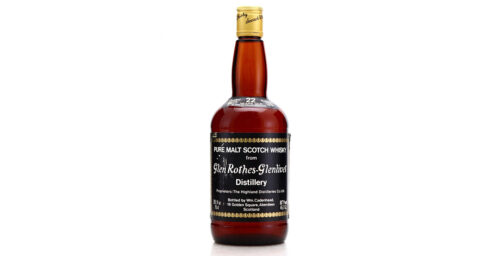
The TTB, or the Alcohol and Tobacco Tax and Trade Bureau defines “Light Whiskey” as whiskey “produced in the U.S. at more than 80% alcohol by volume (160 proof) [but less than 95% alcohol by volume (190 proof)] and stored in used or uncharred new oak containers.”
What we can take away from this bare-bones definition are the following ideas:
- Light whiskey is allowed to be distilled to a much higher proof than all other American whiskies are legally allowed to be
- Light whiskey does not require new charred white oak barrels for its aging
- Light whiskey doesn’t require certain grains in its mashbill
- Light whiskey doesn’t have a required aging time.
What this all means is that light whiskey breaks away from many of the typical production parameters, aging requirements, and preferences of American whiskey. Legally, almost all other American whiskeys are, by definition, not allowed to be distilled at over 160 proof. Light whiskey, however, is required to be distilled at over 160 proof.
Chuck Cowdery writes about the introduction of light whiskey as a category in his book Bourbon, Strange, as well as on his blog. He explains that the introduction of light whiskey in 1972 was a push by the industry to make whiskey more attractive and accessible to a country of drinkers more and more prone to drinker spirits lighter in color and flavor.
As we now know, whiskey suffered in popularity after the late ‘60s, finally making a resurgence in the ‘90s. The industry in the early ‘70s pushed the government to change the definition of whiskey to include whiskies distilled at a higher proof and not aged in the expected new charred oak barrels. They argued that imported whiskeys with less production and aging restrictions were beating them out of the market with their lower production costs, and thus lower shelf prices. What came of this fight was the Light Whiskey label option. Industry and press alike at the time claimed that this labeling denomination would save the industry. Unfortunately, they were oh so wrong.
It’s entirely likely that most everyone reading this review has never heard of light whiskey. What this means is not that we are missing out, but rather that light whiskey as a denomination never appealed to the market and faded away. The High West 14 Year Light Whiskey is surely pulled from forgotten stockpiles.
Utah-based High West, a popular distillery known for its whiskey blends, writes on its website about how their bottling of this whiskey was a chance to educate drinkers on the story of light whiskey, which is something I love. Why drink or love whiskey at all if we do not question the story and meaning of whiskey while doing so! High West has produced yet another whiskey that prompts questioning, and, most importantly—drinking!
Tasting Notes:
Specs: 46% ABV, $100 (distillery release only)
Appearance: Very, very pale lemon yellow in color, it’s hard to believe that this whiskey is 14 years old, even if it was aged in second fill barrels.
Nose: Saline and driftwood are the first impressions on the nose, which feels very light and acidic. Filling out slightly at the end, poached peach, toffee and butterscotch sauce lend some sweetness and butteriness to the nose. Overall the nose remains fresh and quite salt-watery without being seaweed or iron-forward.
Palate: Dry and salty on the palate, bitter lemon pith and grapefruit oil hit first and remain very present. Charred citrus and salt & pepper add depth. Medium bodied in feel, but very fresh and salty in flavor, the dram lacks sweetness or richness. Very hot and bitter on the finish, the whiskey draws out ashy notes for quite some time.
Conclusion:
For me, if a whisk(e)y is going to be hot and salty, it should have some body and richness to it. High West Light Whiskey is a delicious, crisp, taste exploration, but at the end of the day it feels a little unbalanced. In this case, the body is there, but the sweet and rich elements don’t follow through from the nose. Minor gripes about balance aside, this whiskey is tasty and very appropriate for summer. It made me crave ceviche, and to leave my house donning a sunhat.








